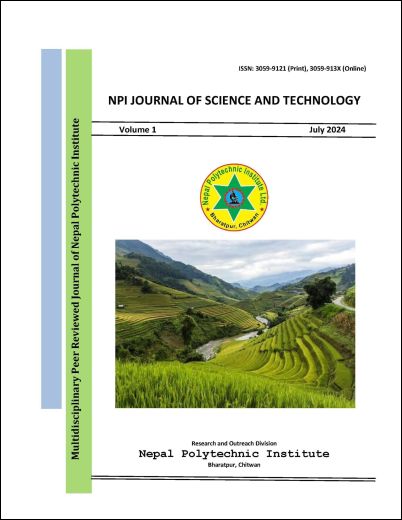A Case Study on Canine Heartworm (Dirofilaria immitis)
DOI:
https://doi.org/10.3126/npijst.v1i1.68947Keywords:
Vector borne, dirofilariasis, heart worm, zoonosisAbstract
A four years old Japanese Spitz dog with a history of anorexia, vomiting, diarrhoea, weakness, reluctant to move, respiratory difficulty, and abdominal discomfort was admitted to the Veterinary Teaching Hospital, Nepal Polytechnic Institute, Chitwan, Nepal. The dog underwent clinical examination including hematological investigation. The hematological blood assays revealed severe anaemia, thrombocytopenia, leukopenia, lymphocytopenia, monocytopenia, and eosinopenia. A peripheral blood smear showed undulating movement of larvae of Dirofilaria Immitis which confirmed it as a canine Dirofilaria immitis (canine heart worm) disease. On the first day of presentation in the hospital, since the dog was dehydrated and anorectic, it was given fluids of 400 ml of normal saline and 200 ml of DNS (dextrose normal saline), pantoprazole at 0.7 mg/kg slow IV, ondansetron at 0.5 mg/kg slow IV, and haematinic agent (HB-RON®) at 5 ml BID PO (Iron, vitamin B12, Folic acid, Zinc, L-Lysin). The following day, the dog was dead, even before all the confirmatory diagnoses. That shows heartworm is prevalent in dog so strategic vector control and screening are recommended for the prevention and control of the disease in countries like Nepal.
Downloads
Downloads
Published
How to Cite
Issue
Section
License
All rights reserved. No part of this publication may be reproduced, distributed, or transmitted in any form or by any means, including photocopying, recording, or other electronic or mechanical methods, without the prior written permission of the publisher, except in the case of brief quotations embodied in critical reviews and certain other non-commercial uses permitted by copyright law.




